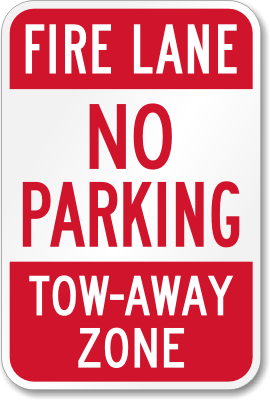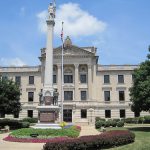Keep Bus Lanes and Fire Lanes Free
Fire lanes and Bus lanes are vital for the smooth operation of the entire traffic on the road. Emergencies can creep up anytime and fire lanes play an important role in aiding emergency vehicles to reach the desired location on time. Similarly, bus lanes are necessary to keep heavy vehicles like buses (public or private) from the rest of the traffic to speed up public transportation that would be impossible due to traffic congestion otherwise.
What are Fire Lanes and Bus Lanes?
Fire lanes are designated areas next to the curb that are reserved for fire trucks, ambulances and other emergency vehicles. Parking, leaving a vehicle attended or unattended is not allowed in fire lanes (except in some cases) and leads to the owner of the vehicle being ticketed. Fire lanes are demarcated by using either bold lettering on the lane (FIRE LANE) or with fire lane signs stating reservations for emergency vehicles.
Bus lanes are ideally reserved for buses offering public transportation on a fixed route. However, in some countries, taxis, motorcycles and bicycles may use these lanes too. ‘Bus Lane’ written in bold letters or a bus lane sign is used to indicate area of the road reserved for buses.
Both the lanes need to be kept free at all times and should not be occupied by other vehicles.
Signs help in keeping fire lanes free

1. Fire Lane Signs with messages like ’No Parking- Fire Lane’ prevent any non-emergency vehicle from parking, moving, or leaving it unattended in a fire lane. A Fire Lane Sign with a Tow Away Threat also serves as a warning to motorists whose vehicles may be towed if found occupying the fire lane.
2. Sometimes markings on the road are difficult to see. Signs in these cases prove helpful.
3. Fire Lane Signs that use reflective films have high visibility properties and make it easy for any vehicle to spot a fire lane at night.
4. Signs installed at both the beginning and the end of a fire lane (required by law) isolate it from the road used by regular vehicles and keep fire lanes free for emergencies.
Signs help keep a safe distance from school buses
Bus lanes are required to speed up public transport. But these are also required as a safety measure. Since buses are huge in size and carrying more passengers, there is an increased risk factor if buses are involved in a traffic collision. Signs and appropriate markings on the road indicate lanes reserved for buses and keep them at a safe distance from other traffic. Just as signs are required to distinguish bus lanes from ordinary lanes, school buses too require suitable signs to safeguard little children while picking up and dropping them off to school.
NHTSA’s Federal Motor Vehicle Safety Standard No. 131 mandates use of STOP sign arm in school buses. A double-faced octagonal STOP Sign arm measuring 17.7 inches with white borders and an uppercase legend should be installed on the left side of the bus. The STOP sign should be retro-reflective and/or supplied with flashing red lights. Vehicles coming from the opposite direction or following a school bus are required to come to a complete stop when the STOP sign arm is extended out and/or red lights are flashed (except in some cases and states). This gives children a clear path to get out of the bus and cross the street without any fear.
Little children are unaware of all traffic rules and regulations and may not be able to apply these rules and regulations in real life scenarios. Since kids spend most of their day at school, moving in and out of the school premises becomes risky especially when crossing a street during a drop-off or pick-up. Signs in such a scenario are invaluable to children’s safety.
The most common activities leading to accidents at a school drop-off/pick-up are-
1. Parents parking in drop-off zones.
2. Kids running between two parked cars or walking between cars.
3. Not following the directions of traffic signals or the crossing guard.
4. Not crossing the street properly (looking left right and left again).
5. Crossing a street at an unfavorable location.
Related Posts
Category: No Parking


















